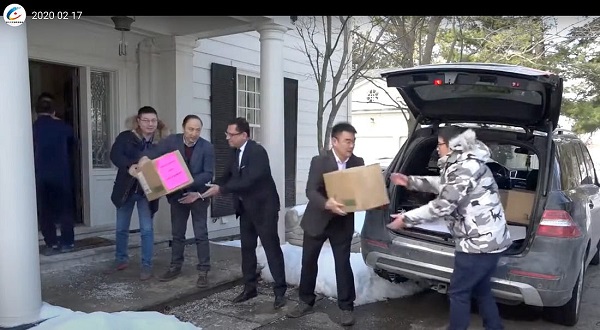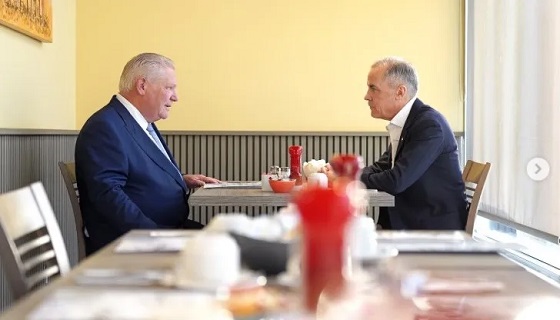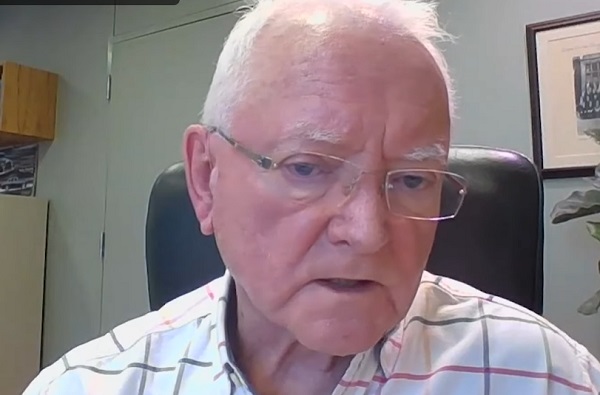Opinion
Woodland north of 32 St. west of Spruce Dr. zoned R3 Multi-family residential. Will it be next for development.

Now that the 13 acres south of 32 St. between Sunnybrook subdivision and Piper Creek will be developed, you have to wonder what part of the park system could be next? Will the lure of quick cash, override any desire to protect our parks?
The wooded area north of 32 Street.between Spruce Drive and Piper Creek is called 3200 Spruce Drive and it is zoned R3 or multi-family residential. Not single family homes, not parks and recreation but multi-family residential. Will it be the next area to be bought by a developer?
Further north to 34 St. and you have more woodland west of Spruce Drive and south of Rotary Park you have 3400 Spruce Drive. It is zoned R4 for manufactured homes. Is the plan to build a gated community of manufactured homes next to Rotary Park? Will city take the cash offered by a developer to build such a community.
Someone told me that these scenarios would never happen, that the city is protective of their parklands. The city called the 13 acres south of 32 St a wildlife corridor and on February 8 of this year had an in-camera meeting to prepare for developing it by the new owner, a developer.
If the city does not want to develop the wood land north of 32 Street and west of Spruce Drive and south of Rotary Park and east of Kin Kanyon why is it zoned R3 and R4?
20 years ago a lawyer working with the city told me the city had an agreement with the Bower sisters to keep the land as it is, now it looks like it is going to be developed. Will this happen to the wood land across the road.
Only Time will tell.
2025 Federal Election
PPE Videos, CCP Letters Reveal Pandemic Coordination with Liberal Riding Boss and Former JCCC Leader—While Carney Denies Significant Meeting In Campaign

Howard Shen, a senior Liberal organizer and former president of the Jiangsu Commerce Council of Canada—now under scrutiny after Prime Minister Mark Carney falsely denied meeting the group during his January leadership campaign—is seen in a pandemic-era video delivering PPE alongside Liberal MP Majid Jowhari to the council’s president, Rui Jiang, in what appears to be a Chinese Communist Party–coordinated operation.
It is one of many concrete pieces of evidence emerging from a years-long investigation by The Bureau into the JCCC’s structure and leadership, exposing a significant overlap between this pro-Beijing business group and the Liberal Party of Canada itself.
After The Bureau first revealed that Peter Yuen, Mark Carney’s handpicked Liberal candidate to replace Paul Chiang in Markham–Unionville, had ties to pro-Beijing networks in Toronto, The Globe and Mail confirmed that Yuen held the title of honorary director of the JCCC, a group with documented links to Beijing’s United Front Work Department. The Bureau’s review of the JCCC’s activities suggests it functions as an elite platform for the Chinese Communist Party’s overseas trade messaging inside Canada.
While campaigning to replace scandal-weakened Prime Minister Justin Trudeau, Carney met with JCCC leaders during a high-profile Lunar New Year event in Toronto. The group’s website described Carney’s entry into politics as “an important turning point in the upgrading of China–Canada relations.”
But when confronted by The Globe with web posts documenting the meeting, Carney flatly denied it occurred. “I’ve never heard of this group,” he said. “Certainly didn’t have a meeting with them—I’m sorry, you can’t believe everything you read in The Globe.”
Yet internal documents, public records, Chinese-language media, and event photographs confirm that the JCCC and Liberal Party networks in the Greater Toronto Area have long shared operatives and strategic objectives—even collaborating to send PPE to United Front Work Department officials in China during the pandemic.
The Bureau, along with diaspora researchers, has assessed that the Carney meeting was significant and included JCCC leaders involved in that same United Front–coordinated PPE operation that included Liberal riding boss Howard Shen.
Perhaps most significantly, while the JCCC has listed Carney’s Markham–Unionville candidate Peter Yuen as an honorary board chair, the same riding’s senior federal executive has been Howard Shen, also the past president of the JCCC.
The Bureau has sent detailed questions to Carney, the Liberal Party of Canada, and Howard Shen. As of publication, none have responded.
Shen has fundraised for Justin Trudeau since the 2015 federal campaign in Markham, appearing with then–cabinet minister John McCallum and many Toronto-area Liberal MPs. As a riding boss, he aligned with the rise of Mary Ng, who succeeded McCallum in a 2017 by-election and was subsequently appointed to Trudeau’s cabinet.
By 2017, Shen remained a Markham-area Liberal executive while simultaneously serving as JCCC president.
That year, JCCC held the Canada–China Free Trade Agreement Forum—one of the Trudeau era’s most consequential Chinese Canadian business gatherings—advancing JCCC’s calls for deeper trade with Beijing and alignment with the Belt and Road Initiative. The forum promoted reduced reliance on the United States and featured greetings from three Liberal MPs—Mary Ng, Majid Jowhari, and Shaun Chen—alongside Chinese officials including Consul General He Wei.
Also during the pandemic, Shen and the JCCC exchanged letters with Chinese Communist Party and United Front authorities. A 2020 letter from the Jiangsu Provincial Committee of the CCP, co-signed by Party Secretary Lou Qinjian and Governor Wu Zhenglong, praised the JCCC’s donations to China.
“In these difficult times, we thank the Jiangsu Commerce Council of Canada for their support in sending protective equipment and funds to help the people of Jiangsu,” the letter stated. “We also express our deep sympathy to overseas Chinese compatriots in Canada as the pandemic situation worsens.”
The JCCC’s reply—co-signed by president Rui Jiang and Howard Shen—acknowledged that its COVID relief effort was “organized under the guidance” of Chinese Communist Party bodies including the Jiangsu Overseas Friendship Association, United Front Work Department, and Overseas Chinese Affairs Office.
“The Canadian Jiangsu Commerce Council of Canada (JCCC) is one of the most influential associations in Canada,” that letter said, adding the group had “quickly raised funds and PPEs whose combined value amounts to nearly two million yuan.”
The letter was signed by Liberal riding boss Howard Shen, as “Past President of the JCCC.”
Photographs from this period show MP Jowhari assisting with PPE deliveries at a JCCC-organized event, carrying boxes from a Toronto residence to a vehicle.
In video footage dated February 17, 2020, Shen is seen passing a fluorescent-labelled PPE box from the front door of a mansion to Jowhari, who then hands it to Rui Jiang for loading into an SUV.
The sequence—featuring three figures tied to both Liberal politics and Beijing-linked organizations—visually underscores the JCCC’s declared coordination with Chinese state bodies.
In another video filmed inside the same mansion, Shen and Jowhari—wearing the same outfits—sit beneath a Chinese flag in a wood-paneled room alongside Rui Jiang, who appears in flowered slippers. MP Jowhari discusses his government’s eagerness to provide aid to China.
“Mr. Shen is the former president of our council,” Jiang tells Jowhari. Chuckling, Jowhari replies: “Howard is the president of everyone. Howard is the glue. He’s very well connected. He understands the community, and the government.”
By this point, Shen had transitioned to Vice Chair of the Markham–Thornhill Federal Liberal Association—a position he still holds.
A separate 2020 video shows Chinese Consul General Han Tao thanking Jowhari for “his support to the Chinese community, as well as to the work of the Chinese Consul General in Toronto.” These filmed moments further reinforce Shen’s dual role as a Liberal organizer and community leader acknowledged by Chinese state officials.
Corporate records reviewed by The Bureau show that in 2012, Shen and Rui Jiang were listed as directors of a similar entity: the Jiangsu International Business Association of Canada.
In perhaps the clearest example of JCCC–Liberal Party integration, in 2017—while serving as both JCCC president and Markham riding chair—Shen led the Canada–China Free Trade Forum. The event’s final report urged Ottawa to move quickly on trade with China, avoid human rights issues, and model Canada’s approach on Australia’s FTA with Beijing.
The document positioned Chinese Canadian leaders as “go-betweens” to guide Canadian officials and framed the U.S. as a liability. “Catch the China high-speed train,” the report said, calling the Belt and Road Initiative “the new global path.”
At the time, Shen’s name appeared on both Liberal electoral filings and Chinese-language United Front publications.
Further documents link Howard Shen to the Chinese Professionals Association of Canada. On February 15, 2014, Qiu Yuanping—then Deputy Secretary-General of the CCP’s International Liaison Department—met with CPAC. Around the same time, the Markham–Unionville Federal Liberal Association was formally established, and Howard Shen became a boss of the riding for the Liberals.
Shen’s ties extended beyond Liberal Party politics. In 2011, he joined the executive board of the Canada Hefei Friendship Association alongside Wei Wei, a Markham real estate developer whose luxury mansion was later raided as an underground casino.
Peter Yuen was named the Liberal candidate in Markham–Unionville in March 2025, following the resignation of incumbent MP Paul Chiang amid controversy over foreign interference. Chiang faced mounting scrutiny after The Bureau and other outlets reported on his comments suggesting that Joe Tay—a Conservative candidate and Canadian citizen facing an illegitimate national security charge in Hong Kong—could be turned over to Chinese consular officials in Toronto. The Liberal Party’s decision to tap Yuen—a longtime Toronto police official with prior affiliations to the JCCC and events linked to the United Front Work Department—has only intensified questions, especially as Prime Minister Mark Carney attempts to distance himself from the JCCC during the ongoing federal election campaign.
The Bureau will update this breaking story with any responses from Prime Minister Carney.
The Bureau is a reader-supported publication.
To receive new posts and support my work, consider becoming a free or paid subscriber.
Invite your friends and earn rewards
2025 Federal Election
Trudeau and Carney Have Blown $43B on EVs

 David Krayden
David Krayden
General Motors laid off 500 workers at his Electric Vehicle (EV) plant in Ingersoll, ON.
It had nothing to do with the tariffs.
It had everything to do with the plummeting fascination that Canadians have for EVs. They are selling like used Edsels in the late 1950s. In a useless attempt to create a demand for these “green” vehicles (which aren’t actually green at all because the production of electricity does not result from magic) the governments of former Prime Minister Justin Trudeau and Ontario Premier Doug Ford wasted $42 billions of your tax money. And it was all to bolster an ideology not a demand for cars. There is no demand for these vehicles.
“You just lost 500 jobs. They’ve nuked those jobs. They’re not there anymore.”
-Dan McTeague

Ford, who saw this coming when he called an early provincial election that he knew he probably was going to lose if he waited for the anticipated vote, was actually honest to reporters when he admitted the layoffs had nothing to do with the dreaded Trump tariff but everything to do with public taste.
“What I understand from the president of General Motors that I spoke to, it’s going to be about 500 employees. Has nothing to do with the tariffs. He said, the volume is not there. People are not purchasing like they thought they would. So, they have thousands of vehicles sitting there. We make sure we support the workers and make sure that we get the government, especially Canada Post, to pick up some of these vehicles, because that’s what it’s geared for you.”

So, Ford expects Canada Post, another government agency on its last legs, to come to the rescue and pick up all these excess EVs? Sounds like it. The irony is that Ford came into office largely because the previous Liberal government had gone hog wild with its green energy program and hydro rates were among the highest in North America. Ford used to say that a industrialized province like Ontario can’t possibly prosper or even subsist on the energy provided by windmills and solar panels. He was right then but over the years he became firmly ensconced in the pocket of Trudeau and the Liberals, just as he is today with Mark Carney.

I spoke to my old friend Dan McTeague on Saturday about this mess. McTeague is a former Liberal MP from the GTA who is the president of Canadians for Affordable Energy today and well known for predicting gas prices across Canada as the @ gaspricewizard on X. As an MP, he always put principal above expediency, and he is no different today. McTeague is anxious for a Conservative Party of Canada (CPC) victory in this federal election and he is actively campaigning for a CPC nominee.

McTeague was not surprised over the dismal outlook for EVs.
“This is about Pierre Poilievre saying your policies are garbage. They’ve hurt Canadians. They’ve undermined the financial feasibility and sustainability of the federal government and the provincial government, and we’re going to get rid of them, just like we’re going to get rid of the CBC.”
-Dan McTeague
“Well, on the 22nd of March after having gone to the Ingersoll plant. I just tweeted a little while ago. I actually went there, filmed what was there in inventory. There were thousands of these vehicles just sitting there doing nothing. Obviously, Doug Ford didn’t get it on the 22nd of March. I said it says a lot about why the Ford nation is giddy about supporting Carney, he’s committed billions in world EV and battery manufacturing like this one in Ingersoll, where the provincial Feds kicked in over half a billion for bright drops. Was supposed to sell 100,000 units. Only sold 2100 actually, it got wrong. It was 2500 they might have probably given that a few away there. But look, this is anticipating what was there. It’s pretty obvious. I mean, I don’t just predict gas prices. Pretty good idea policies, EV mandates, the entire nets,” McTeague said.
McTeague explained that the “EV mandates are toast,” not just because President Donald Trump eliminated them but because they simply never had traction with consumers. He noted that Carney is playing games with the consumer carbon tax – because he hasn’t eliminated it but merely reduced it temporarily to zero – and has continued to keep emissions caps in place.
“Why are they doubling down on forcing us to have California-style appliances, which are extraordinarily costly to consumers. There are thousands of these things that are coming up. GFANZ, the Glasgow Financial Alliance for Net Zero that Mark Carney put forward, is now subject to antitrust review in the United States. This guy could be charged and billions of dollars taken away from the GFANZ organization,” McTeague said, adding that “anybody who hopped on the bandwagon a few years ago on net zero is now looking pretty damn foolish, and it’s amazing to see so many stunned Canadians falling in for this.”
“You just lost 500 jobs. They’ve nuked those jobs. They’re not there anymore.”

The former Liberal MP said the EV program is just one example of a failed economic record from the Trudeau-Carney regime. “However you slice it, the Liberals have had 10 years of failed policies. Net Zero has laid an egg. It’s not doing anything. And what they’re going to try to do is use a lot more public money and hopefully put enough wool over everyone’s eyes, so that we continue to go down this road of more recklessness as a result of what we’ve seen on EVs.
“Anybody who hopped on the bandwagon a few years ago on net zero is now looking pretty damn foolish, and it’s amazing to see so many stunned Canadians falling in for this.”
McTeague also wondered how the Ontario premier has moved from a commonsense politician on green energy to a cheerleader for Trudeau’s environmental authoritarianism. “For Doug Ford to have signed onto this. I mean, Shame on him, but it probably explains why he doesn’t want to support Pierre Poilievre.”
Said McTeague: “This is about Pierre Poilievre saying your policies are garbage. They’ve hurt Canadians. They’ve undermined the financial feasibility and sustainability of the federal government and the provincial government, and we’re going to get rid of them, just like we’re going to get rid of the CBC.”
“And so, for those reasons, you’re going to see why people are not supporting Pierre Poilievre, because they know, you know, they know which side of the bread is going to get buttered and for guys like Doug Ford, Bad mistake, back the wrong horse, and now we’re holding the bag. That’s why he called the election early.”
McTeague said the federal election is a watershed moment for people to decide what kind of future they want: prosperity or poverty. “If Canadians can’t get their head out of the sand and realize that they’re being duped that they can’t afford, you know, the saddling of the debts that these things are incurring for generations to come, and they think that somehow crapping on pipelines or putting emission caps that won’t allow us to make any more oil or gas to send these pipelines that they now suddenly have discovered are important … If we don’t wake up real soon, next two weeks, I can say confidently the next four years is basically cutting people.”
The energy expert predicted that the worst if yet to come if Carney wins a mandate to govern from the voters. “Nothing has changed, if anything, Mr. Carney and his company, as we well know, has lied on so many fronts. And here’s the big one that I’m going to say it here now, because I’ve said it many places before, but to be absolutely clear, you’re going to get a carbon tax, and that 20 cents you think you’re getting off. It’s going to be 40 cents by 2030, likely by the end of another government, “should they form a majority government.”
McTeague cautioned against Canadians becoming deluded and declaring, “Oh, we’re not worried about the future; we just don’t like Donald Trump, and we think Pierre Poilievre is like him.” Give your head a shake — because you know what, I’m going to spend a lot of time over the next few years, pointing back to the stupidity and frivolity of people. And make no mistake, David, these people know what they’re doing. They’re just trying to be cool and friendly because they made mistakes in 2015, 2019 and again in 2021 and they want to somehow think that they can justify bad decisions. What’s coming at the expense of the country? Coming at the expense of our economic sustainability? It’s likely coming at the expense of what concerns me even more so: the future of the federation of this country.”
“I’ve said it many places before, but to be absolutely clear, you’re going to get a carbon tax, and that 20 cents you think you’re getting off. It’s going to be 40 cents by 2030.”
Dan and I also discussed how he has discovered that much of the polling being conducted during this campaign is over-sampling people over 60, which comprise at least 50 percent of the respondents included in the surveys. This bodes well for Poilievre and the Conservatives.
Tomorrow I will be examining how the Consevatives are appealing to working class Canadians, labor union leaders and blue collar workers. Seeking and winning the “hard hat vote” worked for President Richard Nixon in 1972 and President Ronald Reagan in 1984. It can work for Poilevre too in 2025 — and somehow I think he realizes that.
WATCH: The Ugly Truth About Carney: Trudeau Subsidies Fail
CHECK OUT OUR KR NEWS INVESTIGATIVE SERIES ON MARK CARNEY

Rich Banker Man Mark Carney Caught by CBC & CTV Dodging Taxes

Liberal MP Encouraged the Abduction of Conservative Rival for Chinese Bounty

KR NEWSLETTER: Mark Carney to “Fold” “After the vote.” Carney’s Wife’s Eurasia Group Boss Spills the Beans on the Liberals’ “Elbows Up” Master Plan

GFANZ, Mark Carney’s Climate Cabal That Won’t Leave Us Alone

Mark Carney’s is China’s Man

KRN NEWSLETTER: Mark Carney Deep Dive + Disastrous Liberal Leadership Debates
-

 2025 Federal Election2 days ago
2025 Federal Election2 days agoLiberals Replace Candidate Embroiled in Election Interference Scandal with Board Member of School Flagged in Canada’s Election Interference Inquiry
-

 Alberta2 days ago
Alberta2 days agoIs Canada’s Federation Fair?
-

 Alberta2 days ago
Alberta2 days agoProvince introducing “Patient-Focused Funding Model” to fund acute care in Alberta
-

 espionage2 days ago
espionage2 days agoU.S. Experts Warn Canada Is Losing the Fight Against PRC Criminal Networks—Washington Has Run Out of Patience
-

 COVID-191 day ago
COVID-191 day agoMassive new study links COVID jabs to higher risk of myocarditis, stroke, artery disease
-

 Alberta1 day ago
Alberta1 day agoMedical regulator stops short of revoking license of Alberta doctor skeptic of COVID vaccine
-

 International2 days ago
International2 days agoUN committee urges Canada to repeal euthanasia for non-terminally ill patients
-

 Automotive2 days ago
Automotive2 days agoTesla Vandals Keep Running Into The Same Problem … Cameras






